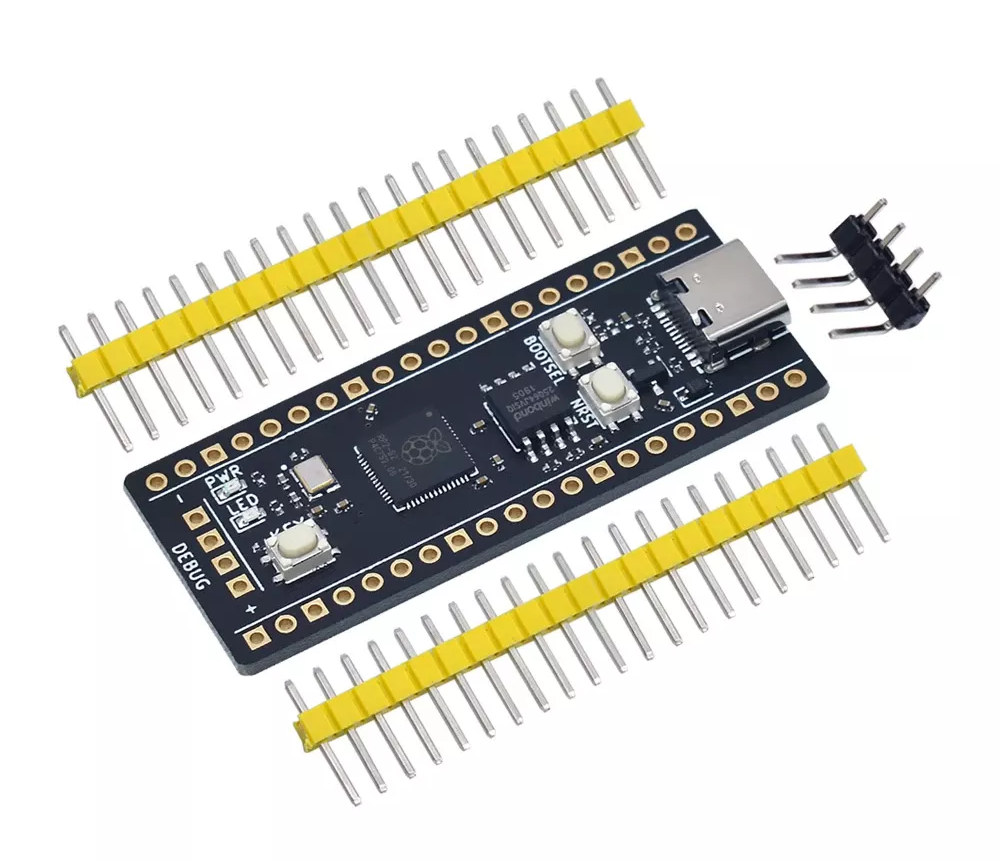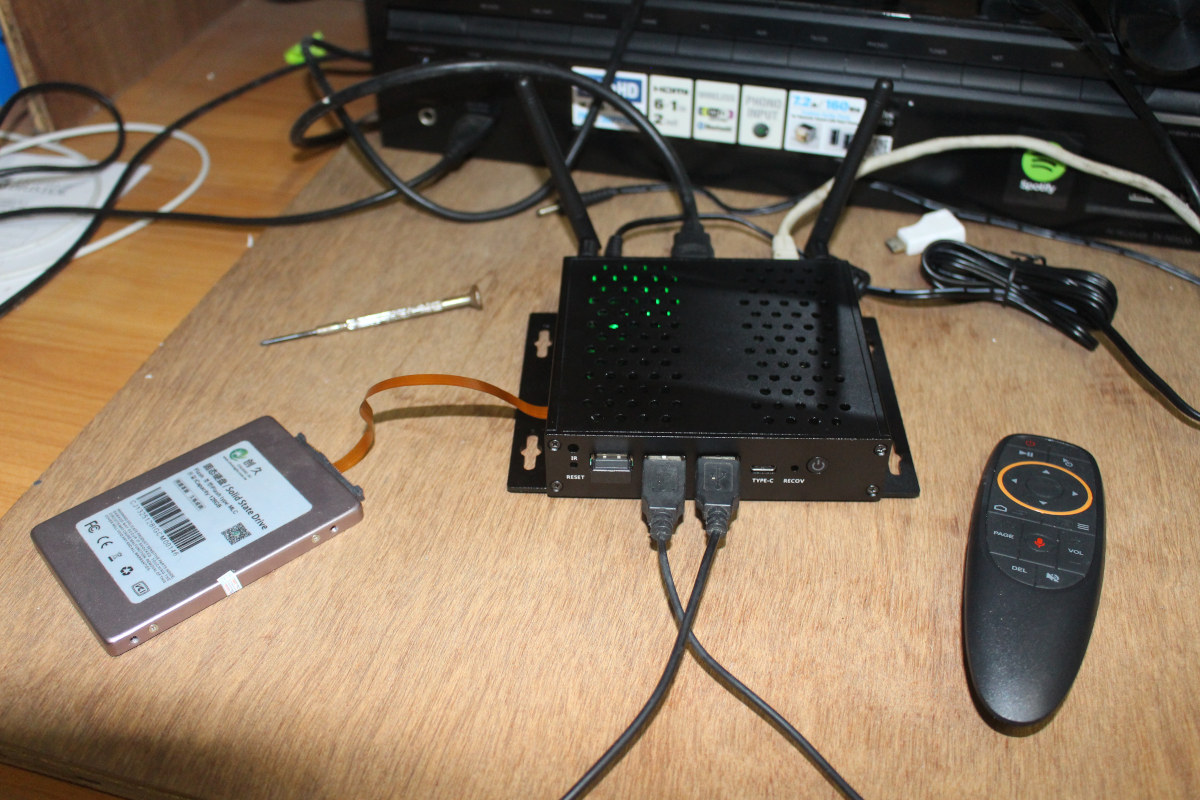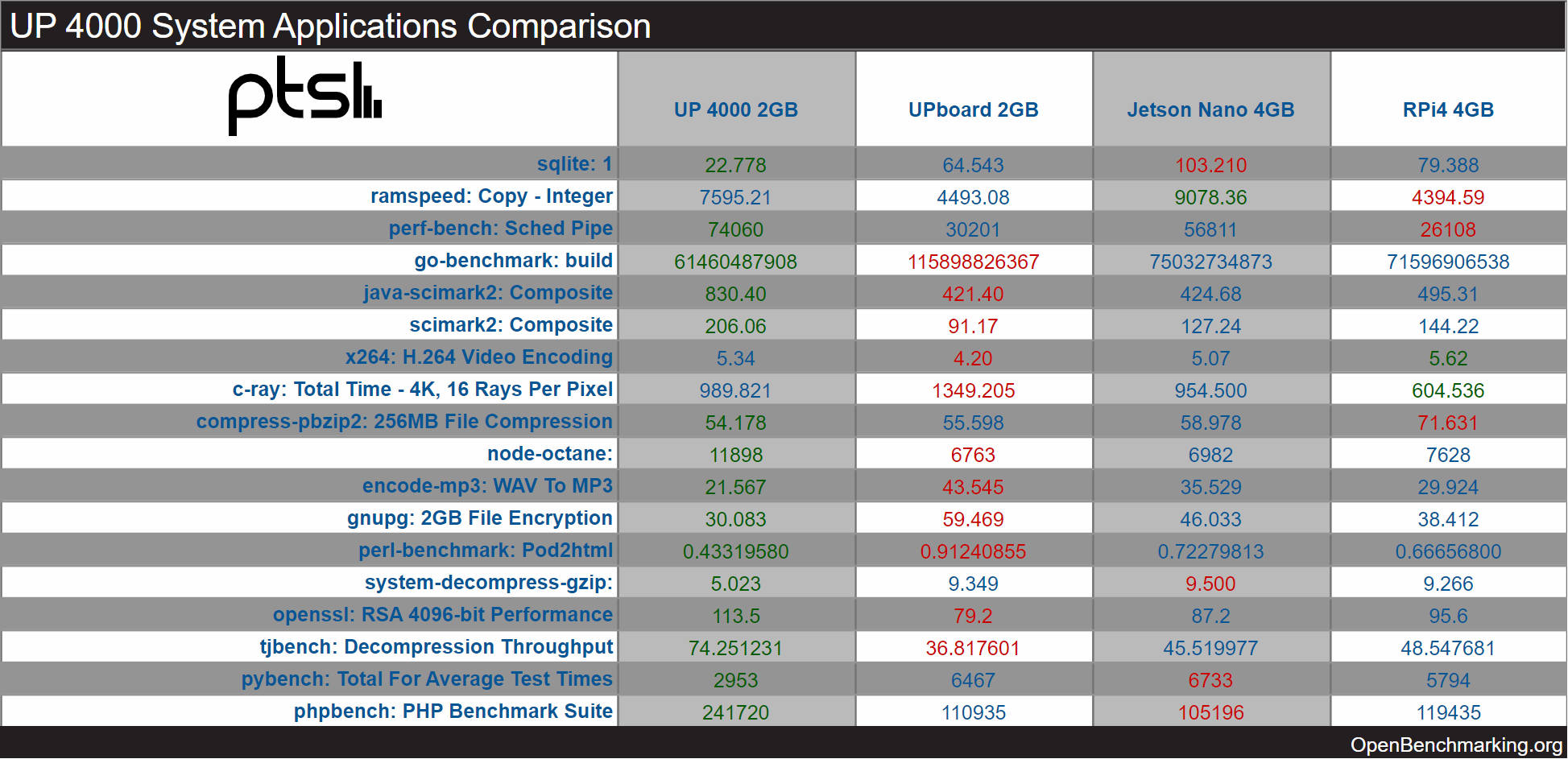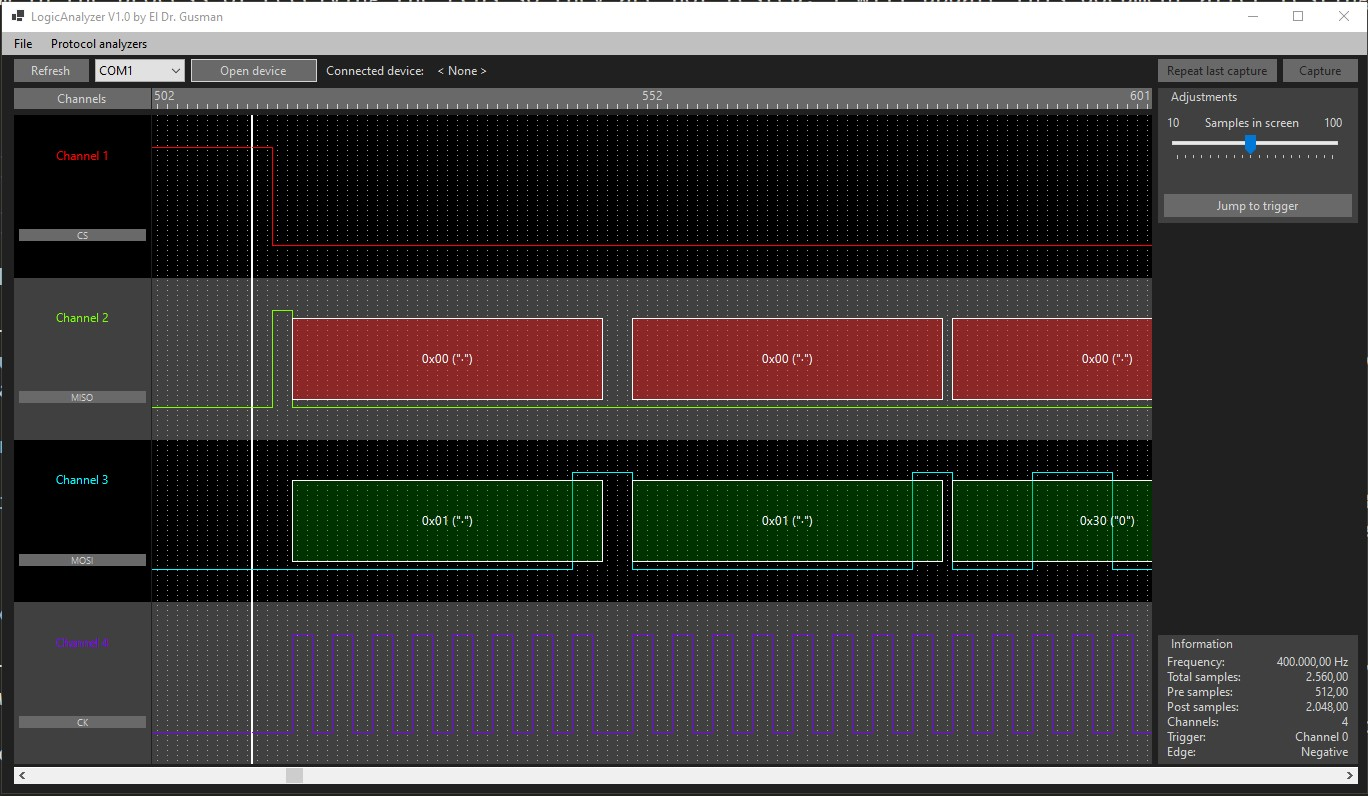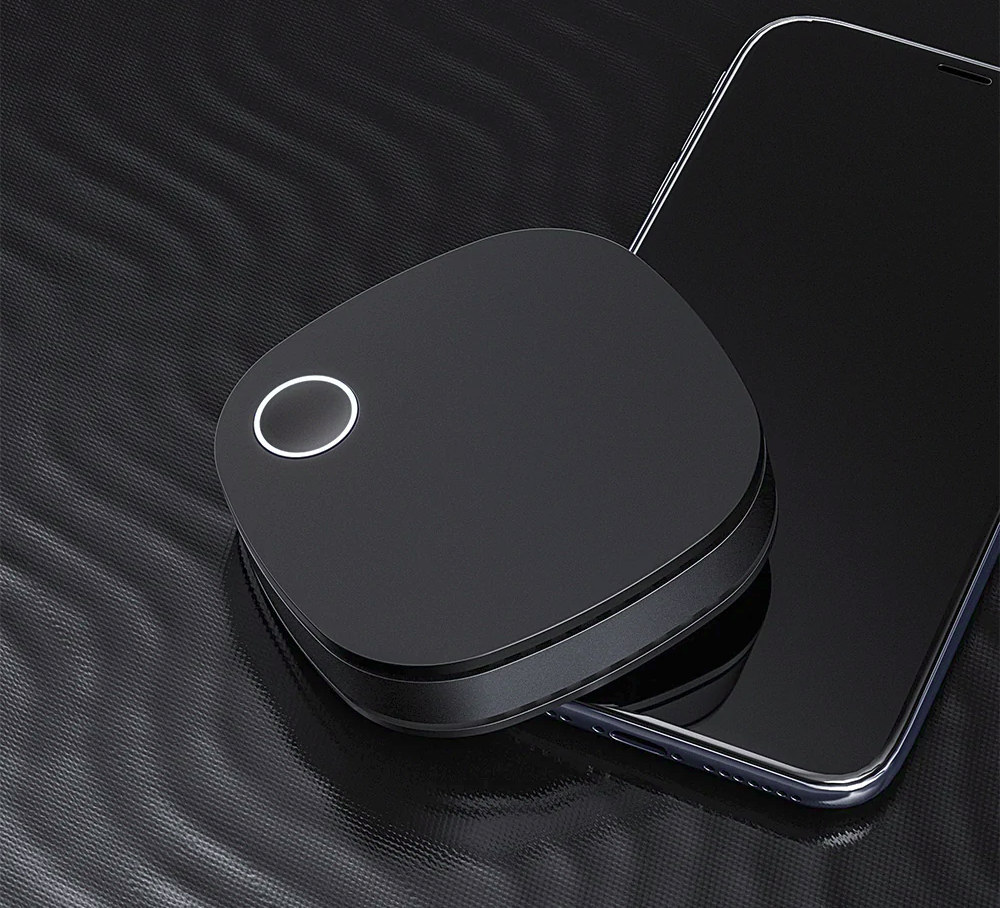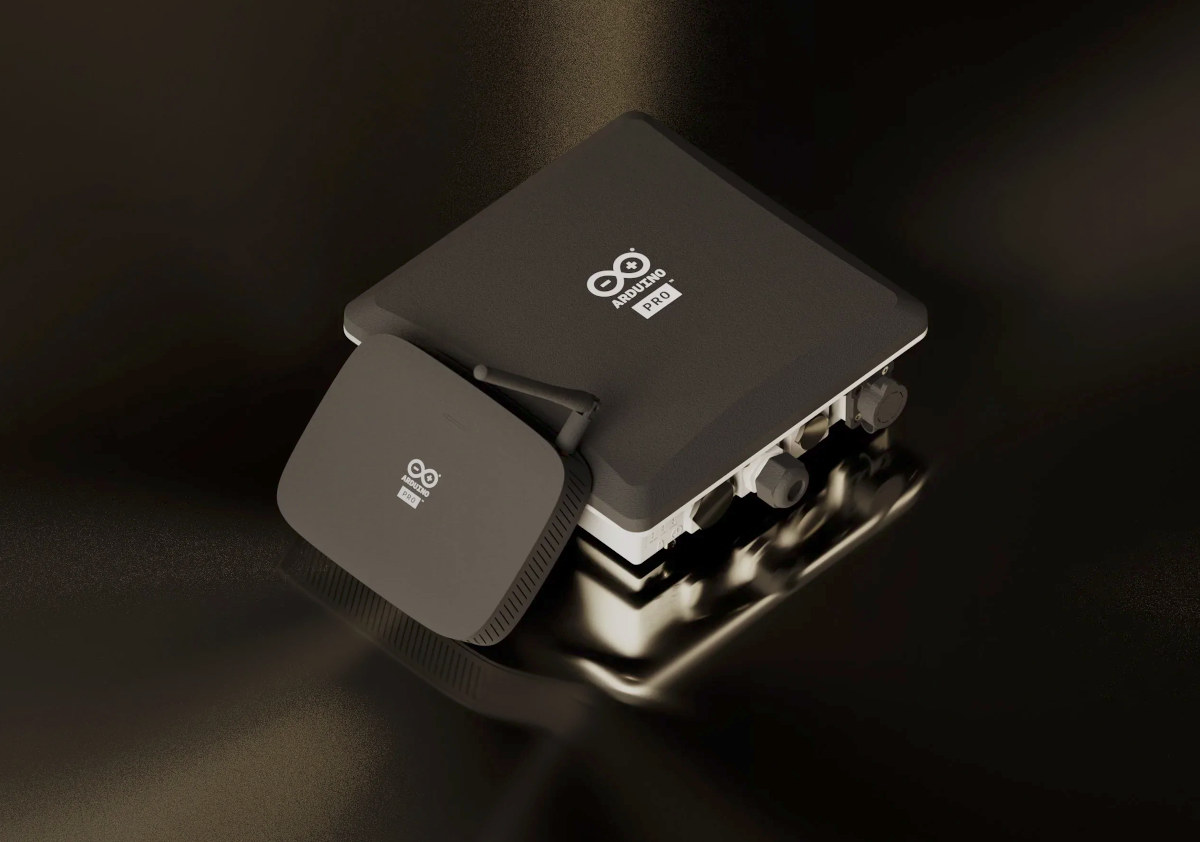Pixel Pump is an open-source hardware vacuum pump that should be easier to use than a pair of tweezers to pick and place SMT components, and suitable for prototypes and small production runs. The system comes with a pen with five exchangeable stainless-steel nozzles to match the size of components, a foot pedal, and several tactile silicone buttons with RGB backlighting to control the unit. The button on the unit (customized parts bought from Alibaba) allows you to change operation modes, switch between high- and low-power settings, or activate reverse mode to clean your nozzle. It’s also possible to configure vacuum power and LED brightness with the buttons. The foot pedal is used to control the vacuum pump to pick up and release the components. A serviceable air filter is also integrated into the design to protect the vacuum pump and valves from debris. Robin Reiter, Pixel Pump’s designer, explains […]
WeAct RP2040 board adds 16MB flash, USB-C port to Raspberry Pi Pico form factor
If the Raspberry Pi Pico’s 2MB of QSPI flash is not quite sufficient for your needs, and you’d not quite a fan of micro USB ports, the WeAct RP2040 “clone” comes with up to 16MB flash and a USB Type-C port for power and programming. Another improvement is the addition of a reset button, which can be convenient for flashing UF2 firmware, and the pinout remains mostly the same. The price is not quite as low as the original Raspberry Pi Pico, but the board sells for an affordable $5.99 with 2MB flash, while the 16MB flash variant goes for $8.99 with shipping included in both cases. WeAct RP2040 specifications: MCU – Raspberry Pi RP2040 dual-core Cortex-M0+ microcontroller @ 133 MHz (overclockable to 250+ MHz) with 264KB SRAM Storage – 2MB to 16MB QSPI flash USB – 1x USB 1.1 Type-C port used for power and programming Expansion 2x 20-pin […]
Mekotronics R58 review – Part 2: Android 12 on Rockchip RK3588 CPU
I’ve written the first part of Mekotronics R58 review last month with an unboxing, teardown, and first boot with 3D graphics benchmarks. I’ve now had more time to play with Android 12 on the Rockchp RK3588 mini PC, so I’ll report my experience with the device. User interface and settings As already mentioned, the box ships with Android 12 for TV and the stock launcher. The Google Play store is working, and I had no troubles installing all apps I needed for the review. Most of the settings are pretty much standard. While the first time, I used Ethernet, and also tried WiFi 6 connecting the R58 to Xiaomi Mi AX6000 router. It worked but not without some effort, as initially, all I got were messages like “Couldn’t find SSID” both with 2.4GHz and 5GHz SSIDs. It turned out I had to disconnect the Ethernet to make WiFi work, and […]
Benchmarks comparison between UP 4000, Raspberry Pi 4, UP board, and Jetson Nano
We wrote about the UP 4000 SBC with an Intel Apollo Lake processor and Raspberry Pi form factor yesterday. But today, I noticed the UP community had put up a benchmarks comparison between the UP 4000 board, the original UP board (Atom x5-8350), the Raspberry Pi 4, and NVIDIA Jetson Nano. They used several of the Phoronix Test Suite benchmarks running on Ubuntu 20.04 (x86) or Ubuntu 18.04 (Arm) on all four boards. The UP 4000 board used featured an Intel Celeron N3350 dual-core processor @ 2.40GHz, the 2GB RAM version of the UP Board, an RPi 4 with 4GB RAM, and a Jetson Nano developer kit with 4GB RAM. As one would have expected, the UP 4000 is ahead in most tests, even though they did not select a model with a quad-core processor such as a Pentium N4200. Note that reading the table may be confusing as for […]
Using Raspberry Pi Pico as a logic analyzer
MCU boards, including the $1.5 BluePill board, have been used as cheap logic analyzers for years, notably with Sigrok open-source software. So it should come as no surprise the $4 Raspberry Pi Pico board can also be used as a logic analyzer, with one developer claiming it can deliver 100 Msps, or the performance obtained with a 1.6 GHz CPU, thanks to the PIOs from the Raspberry Pi RP2040. Hackaday reported about a Sigrok driver for the Pico last March, but the topic was brought to our attention via a post on Hackster.io about an open-source Windows program developed from scratch to transform the Raspberry Pi Pico board into a logic analyzer capable of 100 Msps. Agustín Gimenez Bernad (aka gusmanb)’s LogicAnalyzer program offers up to 24 digital channels, pre, and post-trigger sampling, edge trigger and pattern trigger up to 16 bits. It can work with the Raspberry Pi Pico […]
4K wireless display adapter supports 3840×2160 resolution @ 60 Hz, HDR (Sponsored)
ProScreenCast SC01 is a 4K wireless display adapter supporting 3840×2160 resolution at up to 60 Hz with High-Dynamic Range (HDR) support. The HDMI 2.0 adapter is compatible with Miracast, Airplay, and DLNA streaming standards, and can sustain the required bandwidth needed thanks to dual-band WiFi 5 connectivity. We started to see plenty of Miracast and DLNA capable wireless adapters about 8 years ago, but there were all limited to WiFi 4 and either 720p or 1080p resolutions, so the ProScreenCast SC01 wireless adapter offers a greatly improved video quality and user experience with faster WiFi, and 4K HDR support. SC01 specifications: Video Output – HDMI 2.0 up to 4Kp60 with HDR support Wireless – Dual-band WiFi 5 (802.11ac) Support standards – Airplay, Miracast, and DLNA Power Supply – 5V/1A or 2A via USB Type-C port Dimensions – 72 x 72 x 17 mm Weight – 50.7 grams Materials – ABS+PC […]
MECOOL KP1 smart projector review – Part 1: Unboxing and first try
I’ve just received a review sample of the MECOOL KP1 smart projector with Full HD resolution that ships with an integrated “MECOOL KD5” Android 11 for TV HDMI stick powered by an Amlogic S805X2 processor. The company sent me a sample for review, and in this first post, I’ll check out MECOOL KP1 hardware and give it a first try, before reporting my experience in more detail in the second part of the review. MECOOL KP1 unboxing First, it’s not one of those mini projectors, as the package is fairly large… The device with with HDMI and AV (RCA composite + stereo audio) cables, a remote control, the power cord, and a quick starter guide. The right side of the side comes with the focus wheel and a dust filter. The rear panel includes one IR window, what should be holes for a speaker, and the power input. There’s also […]
Arduino “launches” WisGate Edge LoRaWAN gateways in collaboration with RAKwireless
Arduino was already involved in LoRaWAN with its MKR WAN 1300 board, but now the company has started offering Arduino-branded Wisgate Edge Pro and Wisgate Edge Lite 2 LoRaWAN gateways for respectively outdoor and indoor environments as part of the Arduino Pro family. If the names of the gateways seem familiar, it’s because Arduino collaborated with Rakwireless, and is simply using their existing LoRaWAN gateways. As I understand it RAKwireless will provide the hardware and technical support, while Arduino will sell the gateways and other LoRaWAN hardware through its existing customer base, more acting as a distributor. Arduino WisGate Edge Lite 2 indoor gateway specifications: SoC – MediaTek MT7628 MIPS processor @ 580 MHz System Memory – 128MB DDR2 Storage OS on flash SD card for setup and diagnostics, backup, and data logging Connectivity 10/100M Ethernet RJ45 port 2.4 WiFi (802.11b/g/n) with -95 dBm RX sensitivity, 20dBm Tx power; internal […]


